Photography can be a dynamic avenue to teach PLT lessons. As a fourth grade teacher at Sunny Hills Elementary in Sammamish, Washington, I have been integrating photography and poetry into many of my PLT lessons for several years. By combining PLT and photography, I have found my students have become more interested in protecting the natural environment, and it has fostered their desire to be outdoors and experience nature. By taking the process of photographing to an artistic level, I believe I have enriched the PLT lessons I teach.
Sowing the Seed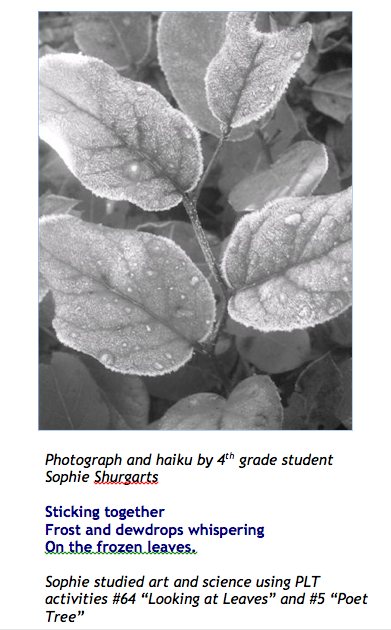
Several years ago, a parent asked me if I would be interested in having her father-in-law come into my classroom to teach some basic principles of photography as part of my art program. I had one request—that the emphasis would be placed on black and white photography. Ansel Adams is one of my favorite fine arts photographers. I have always loved his black and white nature photographs.
I teach at a school with an outdoor campus that includes a lower forested area and native garden. As we ventured outdoors with cameras in hand, I could immediately see the potential for using the camera in my PLT lessons. Parents enthusiastically endorsed our photography project. They readily loaned their children inexpensive family cameras, and paid the processing costs to develop their child’s work.
Over time, my students and I learned more about the art of photography. I found several wonderful books for teaching beginning photography that showed the parts of a camera, how to hold a camera, hints about lighting, and other basic photographic techniques that were easy for a novice like me to understand. Together, my students and I studied the six principles of composition using a Kodak video “Exploring Photography: The Art of Photo Composition.” I collected examples of black and white fine art photography from calendars and magazines, and my students and I discussed which principles of composition had been applied in each photograph.
This began the transformation of our investigative “snapshots” into artistic renderings of nature.
Bringing A-Level Art to PLT Science Lessons
Teaching PLT through the lens of a camera has brought both excitement and emotion to my lessons. Students experience a true sense of wonder for nature as they “study” the natural world through the camera lens. For example, the PLT lesson “Adopt a Tree” (Activity #21) encourages each student to become a steward of an individual tree or shrub on your school campus. Those adopted plants can be observed, tended, and photographed over a year, or more. The photographs that result in that adoption process will astound you.
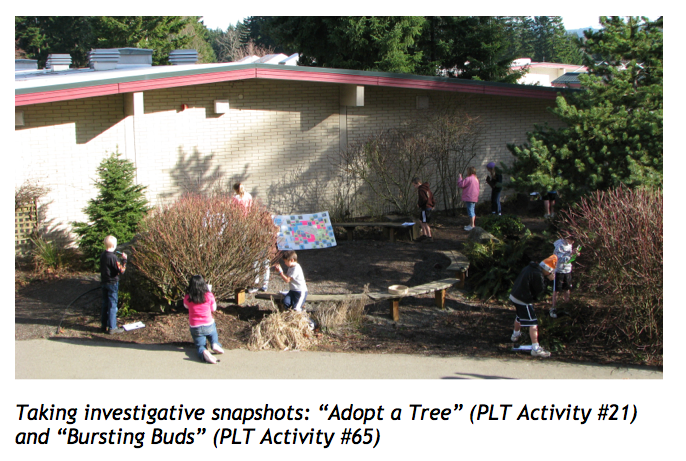
There are many PLT lessons where photography can enhance the learning process, a few of which I have outlined below. The more you get your students outside to take pictures, the more comfortable they become with the process of photography, AND the more they will want to be outside to take part in it!
Our native garden, where students adopt trees and shrubs, also offers opportunities for students to track bud development. Students are tasked to measure, sketch, and photograph buds (and their changes over time) on their adopted plant. They also enter the data on the Project BudBurst website throughout the spring. “Snapshots” are taken during the bud development stage, but I had one student, in particular, who took a spectacular “photograph” of her shrub in full bloom. It was an artistic rendering of a shrub she had watched develop over four months.
“Looking at Leaves,” PLT Activity #64
This activity lends itself 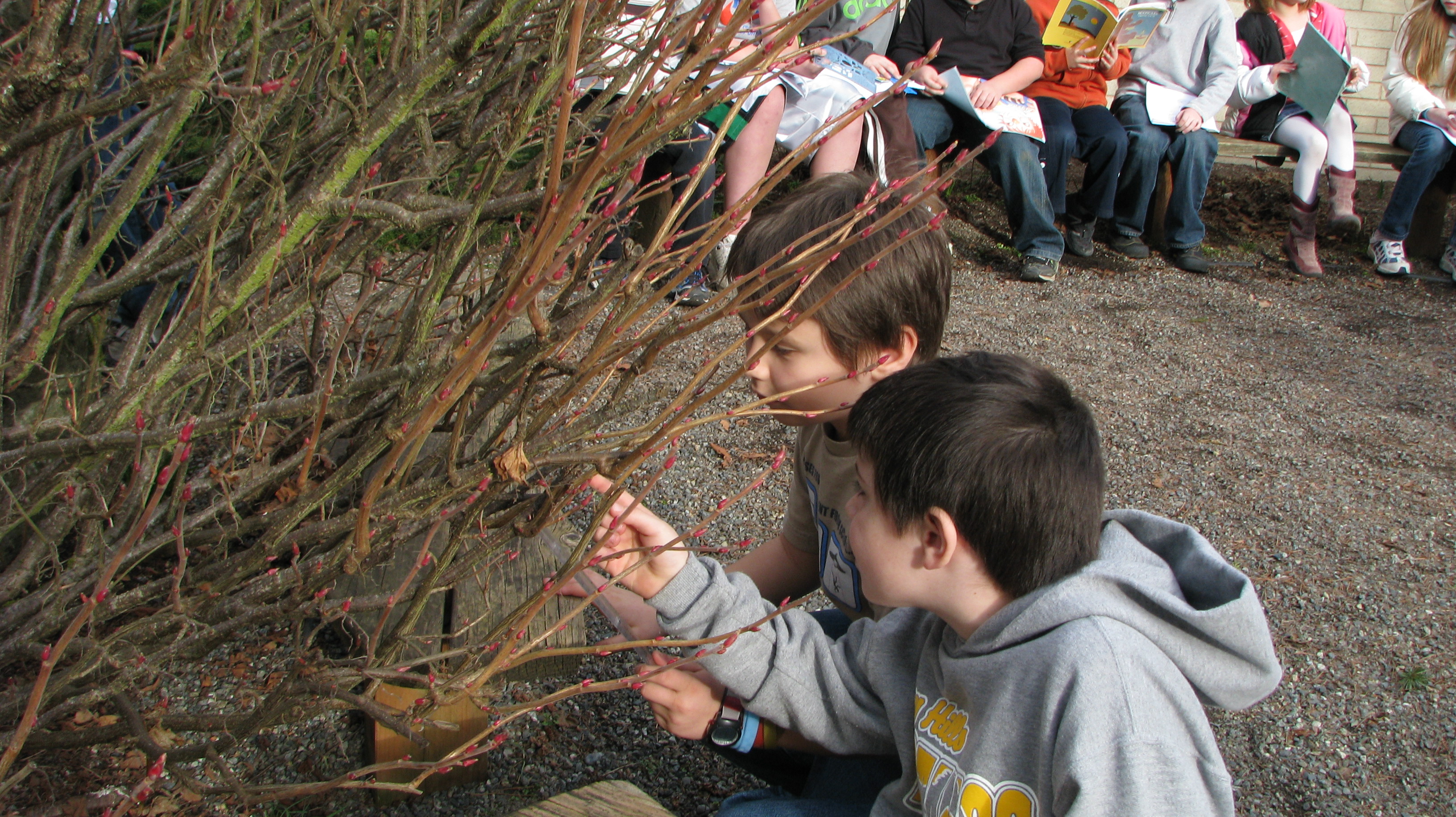 extremely well to improving students’ observational skills, and using a camera can further enhance this process. Taking walks with cameras in hand encourages students to more closely observe the seasonal changes in trees and leaves. I have found that the more children have opportunities to photograph the natural world, the more attuned they become to its changes. Students not only share the changes they observe on our nature walks, but also seasonal changes they have noticed at home, in their own backyards and neighborhoods.
extremely well to improving students’ observational skills, and using a camera can further enhance this process. Taking walks with cameras in hand encourages students to more closely observe the seasonal changes in trees and leaves. I have found that the more children have opportunities to photograph the natural world, the more attuned they become to its changes. Students not only share the changes they observe on our nature walks, but also seasonal changes they have noticed at home, in their own backyards and neighborhoods.
“The Closer You Look,” PLT Activity #61
I highly recommend using photography with this activity. Many of my students do not take their time with their field sketches, or are otherwise not confident in their drawing abilities. These students feel much more successful using their cameras to collect data. Photographing the parts of a tree and then viewing and discussing photographs of the leaves, bark, crown, flowers, cones, etc. leads to lively discussions, as well as a new appreciation of the beauty of trees! Again, snapshots become photographs, as students’ appreciation of the beauty that surrounds them becomes more and more apparent through the lens. 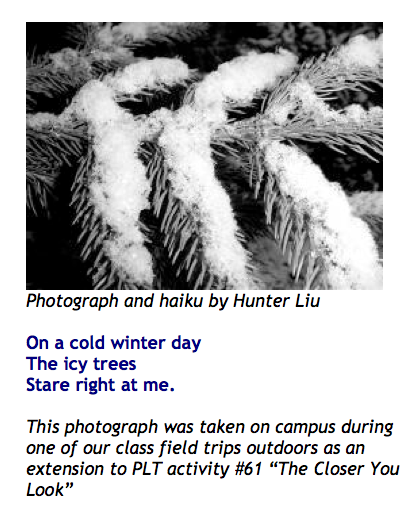
From Investigative Snapshots to Art
Project Learning Tree lessons lend themselves so well to the natural world through their hands-on, multi-disciplinary approach. When the purposeful use of the camera is added to PLT lessons, I find the results to be life changing in some of the students that I teach.
One student wrote to me regarding her life-changing experience with a camera: “I see things in a different perspective now. I feel I am more connected to nature than ever before. It is fun to photograph while also being serious. I feel I am part of nature. I become more aware of my surroundings. Photography has changed my life forever and it can never go back to the way it used to be.”
This intense, emotional connection causes me to continue taking photographs along with my students. I take photographs with students not only to improve my own work, but also to model enthusiasm for taking pictures. The more I learn about photographing well, the better my photographs become, and so do the photographs of my students.
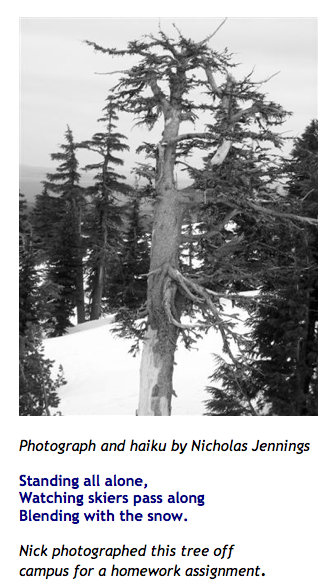
My students keep their best photographs in a portfolio. These portfolios have been displayed at our school art fair, shown at our Young Author’s Night (along with each child’s haiku poetry they composed using PLT Activity #5 “Poet-Tree”), and showcased at our town’s annual Art Walk. Many students sold their work at the local Art Walk to raise money for a local charity. Eleven of my students made $1,077 in four hours, and one student has an order for 40 notecards! In addition, several photographs were selected for our district on-line calendar for 2009-2010.
It is clear to me and my students that incorporating photography into PLT activities helps achieve excellence in environmental education and provides an avenue for students to emotionally connect with the natural world. That emotional connection is the key to developing stewardship of place in our students, and ourselves.
Below you’ll see this year’s collection of student photographs that were displayed and sold at the Art Walk. May you, too, be inspired to teach your PLT lessons through the lens of a camera!
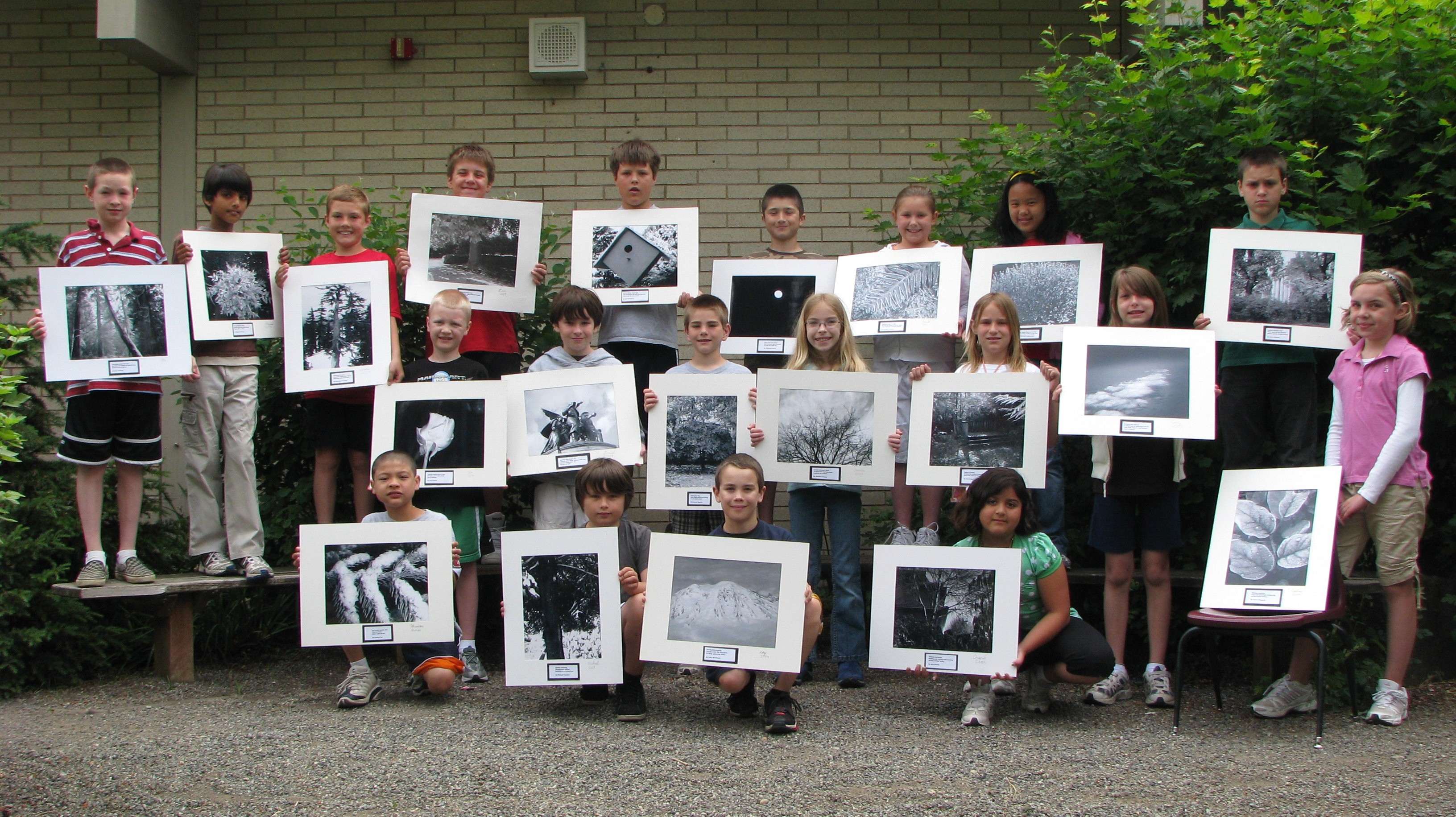
Jane Ulrich is a 4th grade teacher at Sunny Hills Elementary School in Sammamish, Washington and a 2009 National PLT Outstanding Educator Honoree


